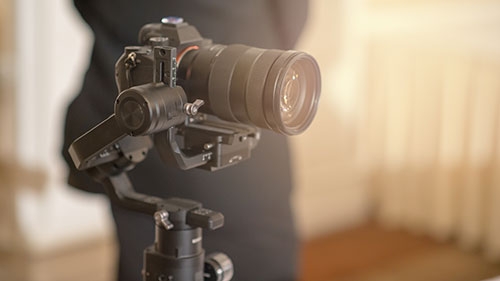In case you’ve been living under a rock for the past seven years you’ll have noticed a shift in the climate of many camera manufacturers. The “Mirrorless Revolution” as some have dubbed it, is alive, well, and steaming along until it seemingly completely overwhelms DSLRs for both professional and amateur aspirations. Still, DSLR bodies are still being produced and used exclusively by some photographers. So this begs the question, which should I be shooting with, and why?
DSLRs, an acronym for digital single lens reflex cameras, are camera bodies that traditionally have a mirror which reflects light gathered by the lens upwards towards a pentaprism which reverses and corrects the image so that when we look through a camera’s viewfinder we see an image more or less similar to what we would see with our eye. This is all done optically without any electronics in the mix. The idea here being that looking through the viewfinder will reveal what is actually happening in real time. Even if the camera is turned off you can still look through the camera and see what the lens is seeing. Though far from the original design of the camera, this has been the predominant camera design since the concept was first realized.

The SLR is a time tested design due to its simplicity and effectiveness. When it’s time to take a photograph the mirror raises to reveal the sensor which then gathers the light onto film or a digital sensor. Once the exposure is completed the mirror returns to its down position and we can once again see through the viewfinder. The main benefit of this design is that no matter what the battery level or light conditions we can see what the lens is seeing. Modern DSLRs also have the benefit of using live view which raises the mirror and records many images at once on the sensor which are then sent to the rear LCD. This shows the photographer what the sensor is seeing, not just the lens. This also has benefits which we’ll discuss later, and is one of the main benefits to mirrorless bodies.
Naturally, the DSLR camera body must be large enough to house the mirror and prism. These two components, while helpful for us to compose and take photographs, are not strictly speaking necessary for the camera to work. As such, the mirror and prism can be viewed as fat to be trimmed in order to make a camera more efficient. Enter the mirrorless camera.
Camera technology has advanced such that the sensor readout is fast enough that the images recorded by the sensor can be transmitted to the rear LCD very quickly and can be used instead of an optical viewfinder like in a DSLR. By removing the prism and mirror, cameras can be made to be smaller and lighter while still retaining the same image quality and sensor size.

The ability to see exactly what the sensor is seeing through the viewfinder or rear LCD is arguably much better for photography and videography since there’s nothing lost in translation. Looking through the viewfinder of a DSLR, you might compose and take a great image, only to realize that your settings were wrong and you overexposed by two stops. You might also not get 100% coverage in a DSLR viewfinder, meaning that there could be some sections of the image that will be recorded by the sensor that you’re not seeing through the viewfinder. This is denoted in spec sheets by a % of viewfinder coverage. The best DSLRs will have 100% coverage, though many more will have 95-98% coverage. Mirrorless bodies, on the other hand, have the ability to show you in realtime exactly what your composition will be, what your exposure will be, and a bunch of other information digitally laid over the image in the viewfinder. Lastly, mirrorless bodies have the potential to shoot at much higher frame rates than DSLR bodies since there isn’t a mirror that has to move out of the way. Because of the lack of a mirror, its possible to mount any number of adapters to a mirrorless camera body. One adapter could allow Leica lenses to be used on a Nikon, and another could allow Canon glass to be used on a Sony body.
Mirrorless bodies might sound great but they’re not perfect. The downside to mirrorless camera bodies include, starting with perhaps the most notable downside, shorter battery life, EVF “lag”, slower autofocus, and a few more technical limitations. Since the mirrorless camera is constantly reading off the sensor and using a power hungry display, battery life is shorter than a typical DSLR. Though very fast, there is some delay that happens when looking through a mirrorless camera since light has to hit the sensor, be processed, and then displayed on the rear LCD. Though small, this delay could be crucial in certain situations. Autofocus also tends to be faster on DSLR bodies.
So, which one is better for you? Unless you have some very specific needs, either will work perfectly well. Both mirrorless and DSLRs can be used to create amazing images, and only under highly specific circumstances will one “get the shot” while the other won’t. Still, the writing is on the wall. Mirrorless body designs have been adopted in some form by every major camera manufacturer. If you’re on the fence about which one to use, I bet you can guess our solution. Rent both and see which you like better! Seriously though, there really isn't any substitution for getting a camera in your hands and seeing how you feel about it. You can only do so much reading on this kind of subject, so stop by and check out our options. Our guess is that you'll figure out pretty quickly which system is for you.
Here are some suggestions:
DSLRs:
Canon 5D mk IV
Canon EOS 90D
Nikon D850
Nikon D7200
Mirrorless:






